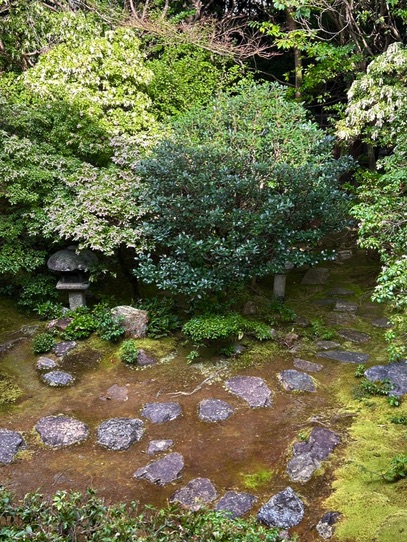
Elegance: beginnings and endings of phrases
A lot of attention is given to developing diminuendo in honkyoku phrasing. How you begin notes is important too, and how they are brought into existence affects the whole feel of the ensuing phrase and the composition as a whole.
Low volume, timbre and latent power
The common practice is to work on shakuhachi sound looking for clarity, power and a strong tonal core.
However, looking towards the other end of the sound arena, you can find enormous potential in the barely-heard tone.
Small sounds are not low-powered. Nothing gives the impression of authority so much as power which is hidden, merely hinted at. A lot of focus and power can be brought to small sounds, which still yield a small sound, but with a sense of held back, hidden energy.
So, when dynamic contrast is employed in a honkyoku phrase, the contrast is not between weak sound and strong sound, but is between hidden sound and exposed sound. Hidden sound can be practiced so as to be full of color, rich in timbre and powerfully restrained.

Genesis of a sound
The maximum control of the shakuhachi voicing comes from experiencing the subtle transition from silence into sound. This is best investigated using only a tiny amound of air in the flute.
Bring the flute to your lips and form your embouchure, but rest in silence. As slowly and carefully as possible, release enough air into the flute that you can just perceive a tiny beginning sound, and the transition is not sudden. (just like listening for a distant approaching train in the mouth of a tunnnel). There will be a moment where you can barely hear your tiny sound.
That subtle transition from silence into a tiny sound is a rich arena to experience. It teaches you to employ embouchure to produce a clear sound right from the start. Once you have made your tiny sound, you can increase the volume more surely and cleanly, using the same embouchure.
From Sound to Silence
You can reverse the above process, taking a strong clear sound gradually into silence.
To do this, undeerstand that there are two components in play: breath and embouchure. As you diminish sound, you employ less air in the flute, but your embouchure has to change its shape at the same time, otherwise your sound will stop abruptly. As the air diminishes, make the embouchure opening flatter and narrower. This will sustain the diminishing sound in the flute until silence is found. Try to make the process as long as possible.
This way, you learn about the subtle control of your embouchure, both in making and un-making a sound.
